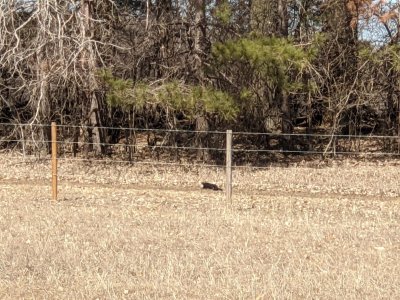M.Magis
Well-known member
Agree, one out could be a loose wire. All of them is usually a bigger problem.In my experience with some pretty old dodgy fences an individual cow might push through a weak spot but rarely will a group go through. If a group gets out I go looking for another spot where the fence might be down completely. Is it possible that a gate got opened and maybe a neighbour closed it so no more could get out.
Ken
I'll also add, this is the reason I no longer build or trust 4 wire fences. The gaps are large enough to let them reach through if they see something the like, and over time that just loosens everything. Deer also go right through 4 wire and loosen it up. Since I went to 6 tight wires, that ended all reachers and deer go over instead of through.


